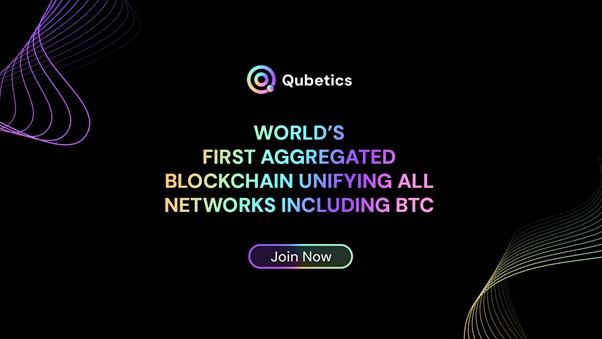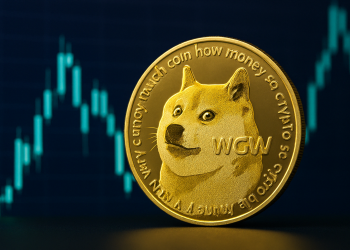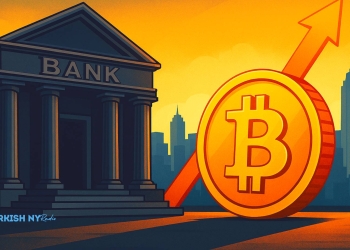The blockchain ecosystem has grown to encompass various projects, each offering unique capabilities tailored to decentralised technology. Quant, Litecoin, Stellar, Monero, and Cronos are all examples of how diverse the blockchain space has become, with each project focusing on specific use cases, such as interoperability, digital payments, and privacy. Meanwhile, Qubetics brings a new dimension with its advanced smart contract capabilities, providing developers with the tools to build scalable and secure decentralised applications (DApps). This article explores the strengths and innovations of each platform, highlighting how they contribute to the broader blockchain landscape.
Is This the Best Crypto to Buy in 2024?
Through its comprehensive smart contract capabilities, Qubetics introduces a powerful environment for developing decentralised applications. Built with a robust programming framework and extensive support for development tools, the Qubetics platform allows developers to deploy smart contracts directly on its blockchain. The interoperability opens the door for cross-chain collaboration, allowing developers to leverage the innovation of the broader Ethereum ecosystem while benefiting from Qubetics’ unique features.
The smart contracts on Qubetics are designed to support various functionalities, from user payments to the automated distribution of $TICS tokens. The platform fetches real-time prices from decentralised sources, ensuring that token distribution remains accurate and transparent. Additionally, Qubetics offers a phased approach to its Initial Coin Offering (ICO), with advanced management tools for administrators, making it easier to oversee and adapt the ICO process as needed.
Qubetics’ network supports vertical and horizontal scaling, creating an operating system-like environment for decentralised applications. This includes support for user authentication, databases, and task scheduling across multiple CPU cores, significantly enhancing scalability. By reducing transaction fees and enabling rapid deployment of DApps, Qubetics offers a platform that is both developer-friendly and efficient, encouraging the creation of a diverse range of applications.
The current presale of Qubetics provides an opportunity for early investors, with 1 $TICS token priced at $0.0175692. A $500 investment would yield around 28,455 tokens, and if the price of Qubetics reaches $15, this investment could be worth about $426,825. This potential for high returns, coupled with the platform’s advanced capabilities, makes Qubetics an attractive option for those looking to engage with a blockchain that prioritises scalability and interoperability.
Quant: Bridging Blockchains with Interoperability
Quant is a blockchain interoperability platform that enables seamless communication between blockchains. Its Overledger Network is designed to allow developers to create multi-chain applications (MApps) that can interact with multiple blockchains without being restricted to one network. This makes Quant particularly valuable for enterprises that need to integrate blockchain technology into their existing infrastructure while maintaining flexibility in choosing their preferred blockchain networks.
Quant’s native token, QNT, is used to access the Overledger ecosystem and pay for transactions within the network. This token also plays a role in staking, essential for securing the network and validating transactions. By prioritising interoperability, Quant aims to create a more interconnected blockchain ecosystem where assets and data can move freely across different networks, promoting the broader adoption of blockchain technology.
Litecoin: A Fast and Low-Cost Digital Currency
Litecoin (LTC) is one of the earliest cryptocurrencies, created by Charlie Lee in 2011 as a lighter, faster alternative to Bitcoin. Often referred to as the silver to Bitcoin’s gold, Litecoin offers faster block generation times (2.5 minutes per block compared to Bitcoin’s 10 minutes) and lower transaction fees. This makes Litecoin particularly suited for small payments and everyday transactions, providing a practical digital currency for peer-to-peer payments.
Litecoin has implemented several upgrades to enhance its usability and security, such as integrating the Lightning Network for faster off-chain transactions and adopting Segregated Witness (SegWit) to increase transaction throughput. The upcoming MimbleWimble extension block, aimed at enhancing privacy and fungibility, further positions Litecoin as a versatile cryptocurrency that balances transparency with user confidentiality. Its wide acceptance among merchants and robust network make Litecoin a reliable choice for digital payments.
Stellar: Facilitating Cross-Border Payments
Stellar (XLM) is a blockchain network facilitating fast and affordable cross-border payments. Launched in 2014 by Jed McCaleb, Stellar aims to bridge the gap between cryptocurrencies and traditional financial systems, making it easier for users to transfer money globally. The Stellar network uses its native token, Lumens (XLM), as a bridge currency for facilitating transactions between different fiat currencies, thus reducing the costs and time associated with traditional remittance services.
Stellar’s open-source nature and focus on partnerships with financial institutions make it a key player in blockchain-based payments. It has collaborated with companies like IBM to create solutions for cross-border transactions, offering a decentralised yet enterprise-friendly platform for moving money across borders. Stellar’s consensus protocol enables quick transaction confirmation without the energy-intensive processes seen in proof-of-work blockchains, making it both efficient and environmentally friendly.
Monero: Championing Privacy and Anonymity
Monero (XMR) is renowned for its strong emphasis on privacy and anonymity. Unlike many other cryptocurrencies, where transactions can be traced on a public ledger, Monero uses advanced cryptographic techniques like ring signatures, stealth addresses, and confidential transactions to obscure transaction details. This ensures that the sender, recipient, and transaction amount remain confidential, providing users unparalleled privacy.
Monero’s privacy features make it popular for users prioritising financial confidentiality, especially in regions where financial transactions are closely monitored or regulated. However, this focus on privacy has also attracted regulatory scrutiny in some countries, leading to delistings from exchanges. Despite these challenges, Monero maintains a strong community and is a preferred option for privacy-conscious users and transactions.
Cronos: Bringing DeFi and DApps to a Wider Audience
Cronos is a blockchain network developed by Crypto.com designed to support DeFi applications, NFTs, and other Web3 use cases. Built on the Cosmos SDK and compatible with the Ethereum Virtual Machine (EVM), Cronos enables developers to easily port their Ethereum-based applications to the Cronos ecosystem. This interoperability allows Cronos to benefit from Ethereum’s robust DeFi ecosystem while offering lower transaction fees and faster processing times.
The Cronos Chain is closely integrated with Crypto.com’s services, providing users a streamlined experience accessing DeFi protocols, earning yield, and participating in decentralised exchanges. The native token, CRO, is used for transaction fees, staking, and as a medium of exchange within the ecosystem. This makes Cronos a versatile platform for developers and users looking to engage with DeFi without facing the high gas fees often associated with Ethereum.
Conclusion
Quant, Litecoin, Stellar, Monero, Cronos, and Qubetics each uniquely contribute to the blockchain ecosystem. Quant focuses on enabling blockchain interoperability, while Litecoin offers a fast and low-cost digital currency. Stellar aims to simplify cross-border payments and Monero provides users with unmatched privacy. Cronos brings DeFi to a broader audience with lower fees, while Qubetics empowers developers with a comprehensive smart contract environment.
These projects illustrate the diverse opportunities within the blockchain space, catering to different user needs and preferences. As the industry continues to grow, the innovation brought by each platform plays a crucial role in shaping the future of decentralised finance and applications.
For More Information:
Qubetics: https://qubetics.com
Telegram: https://t.me/qubetics
Twitter: https://x.com/qubetics
Stay tuned to TurkishNY Radio for updated news.




























































































![BitTorrent [New]](https://s2.coinmarketcap.com/static/img/coins/64x64/16086.png)



















